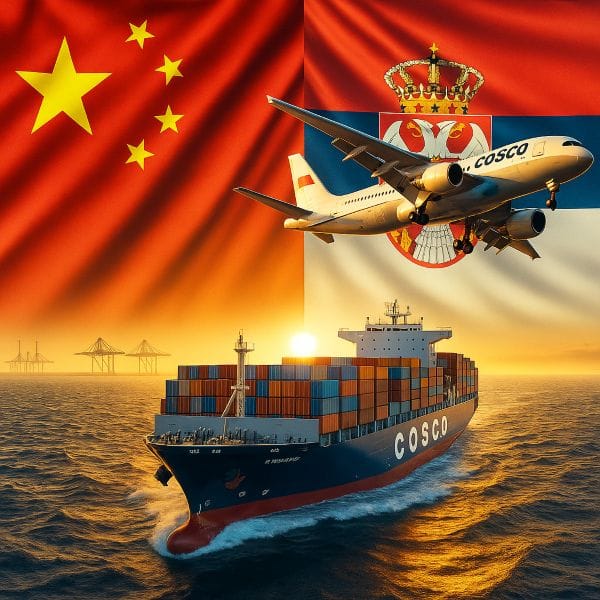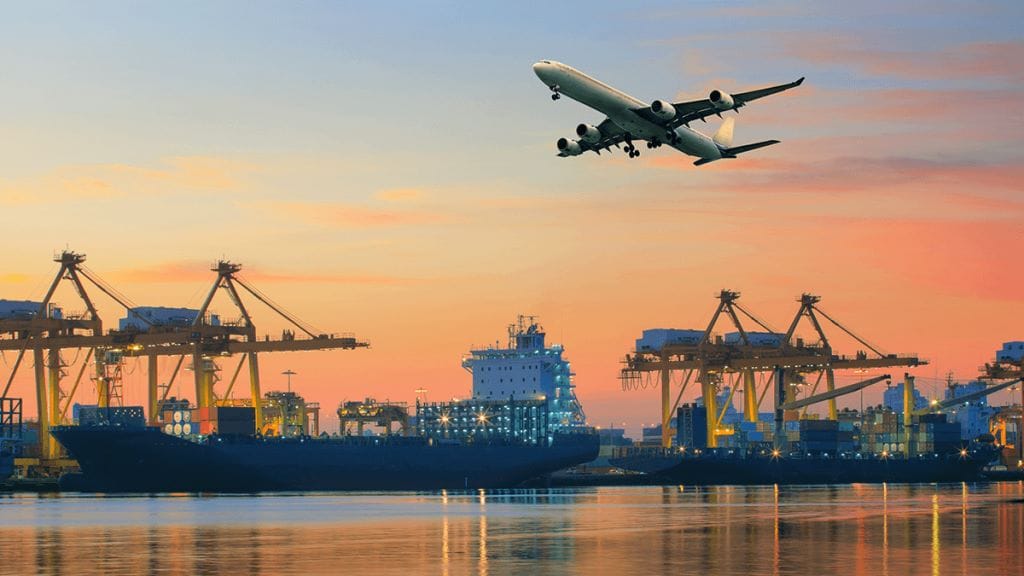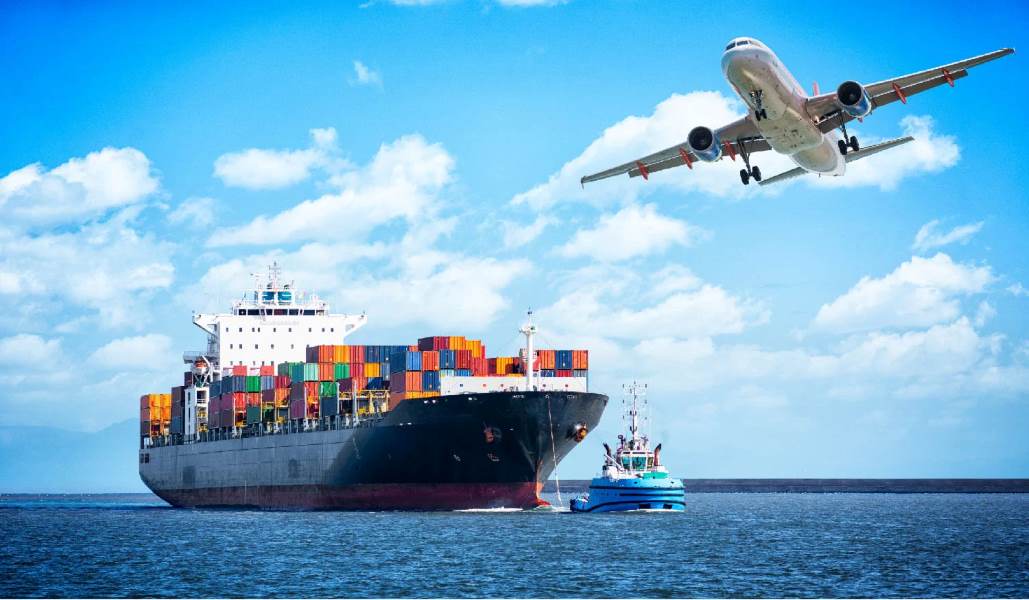With the deepening of economic and trade exchanges between China and European countries, Serbia, as an important node of the “Belt and Road” initiative, is increasingly becoming an important partner and logistics channel for Chinese companies in the Central and Eastern European market. This article will give a detailed introduction to the basic situation of shipping from China to Serbia.

Introduction to Serbia
Located in the core of the Balkan Peninsula, Serbia borders Hungary, Croatia and Romania. It is an important logistics hub connecting Europe, Asia and Africa. Serbia actively participates in the construction of the “Belt and Road” initiative, and the market demand for Chinese goods in Serbia continues to grow.
Why Shipping from China to Serbia?
- Rapidly growing trade: In recent years, bilateral trade between China and Serbia has continued to grow, covering electronics, mechanical equipment, auto parts, building materials, textiles and other fields.
- “Belt and Road” strategic partner: Serbia is an active participant in China’s “17+1” cooperation mechanism, and the China-Serbia Free Trade Agreement has further promoted trade facilitation between the two countries.
- Infrastructure projects drive demand: A large number of infrastructure construction projects in which China participates (such as roads, bridges, energy, etc.) drive the import and export demand for equipment and raw materials.
- Investment-friendly environment: Serbia is open to foreign direct investment and provides a springboard for Chinese products to enter the European market
How to Ship from China to Serbia
The logistics path from China to Serbia involves multiple modes of transportation, including sea transportation, rail transportation (China-Europe Express) and air transportation. Each mode of transportation has its own characteristics
Sea Freight
Sea transportation has low costs and is suitable for large quantities of non-time-sensitive goods. There are two main modes of transportation: full container transportation (FCL) and less than container transportation (LCL)
- FCL: This option is very suitable for bulk goods and is used in dedicated containers, which reduces handling work and reduces the risk of damage to goods.
- LCL: For small goods that cannot fill a container, share container space with other importers.
Major import ports
- Port of Belgrade: The largest river port in Serbia, located on the Sava River, is convenient for inland shipping and logistics.
- Port of Novi Sad: Located on the Danube River, this port handles bulk cargo and is an integral part of Serbia’s trade.
- Port of Pancevo: Located near the capital, the port mainly transports industrial goods and provides strong logistics solutions.
Air Freight
Air transport is the fastest mode of transport and is ideal for time-sensitive situations. It is suitable for items that need to be delivered quickly, and it is highly reliable, has less contact with the ground, is not easily damaged, and is suitable for small quantities of high-value goods.
Major airports
- Nikola Tesla International Airport: Serbia’s largest and most important international airport, which receives a large amount of air cargo from China every year and supports freight forwarding, customs clearance and transshipment operations.
Rail Freight
Rail freight is a fast and reliable way, especially for those goods that need to be both timely and economical. Through the transportation network of the China-Europe Express, the cost is between sea and air transport, and is generally suitable for medium and high-value goods such as electronic products, auto parts, and mechanical equipment.
Rail transport provides customers with stable transportation timeliness and convenient cross-border services, and is an ideal alternative to sea and air transport.
Major railway centers
- Belgrade: It is a major railway logistics center that receives goods from Hungary or Bulgaria and has facilities such as freight yards and customs clearance warehouses.
- Nis: An important city in the south and a logistics hub that can further distribute goods to Macedonia, Greece and other places.
Shipping Cost from China to Serbia
The shipping costs of shipping goods from China to Serbia are affected by many factors, the main factors include:
- Transportation mode selection (sea transportation is the cheapest, air transportation is the most expensive)
- Cargo type and volume weight
- Distance between the port of departure and the destination and transshipment costs
- Customs clearance and destination delivery costs
- Door-to-door (DDU/DDP) service is required
- Fuel surcharges, peak season surcharges, etc.
The following is the cost range for shipping from China to Serbia:
| Shipping Method | Shipping From China to Serbia(Cost) |
|---|---|
| Sea Freight (20ft Container) | $1550-$3050 |
| Sea Freight (40ft Container) | $3,000 – $5,000 |
| Sea Freight (LCL) | $90 – $130/CBM |
| Air Freight | $5.0 – $9.0/kg |
| Rail Freight (LCL) | $160 – $200/CBM |
| Rail Freight (40ft container) | $6,000 – $7,500 |
| Door to Door Shipping | Air Freight $12 to $16 per kg Sea Freight $150 – $220 CBM |

Container Cost from China to Serbia
Sea transportation is the most common mode of transportation from China to Serbia. Containers are the most cost-effective option in transportation. In addition to container costs, it also consists of the following costs:
- Port charges: including port unloading fees, container loading and unloading fees, port service fees, etc.
- Storage costs: If the goods stay at the destination port for more than the specified time, storage fees may be incurred.
- Customs clearance costs: Import customs clearance may require payment of relevant taxes and customs clearance agent fees.
- Insurance costs: You can choose to purchase freight insurance, usually the insurance cost is 0.3%-0.5% of the value of the goods.
- Bunker surcharge (BAF): This is an additional fee adjusted according to fuel price fluctuations.
| POL (port of loading) | POD (port of discharge) | 20ft container cost | 40ft container cost |
|---|---|---|---|
| Shanghai | Belgrade | $2050-$3350 | $3500-$5000 |
| Shenzhen | Belgrade | $2000-$3500 | $3450-$4950 |
| Ningbo | Belgrade | $2000-$3400 | $3650-$4850 |
| Qingdao | Belgrade | $2050-$3350 | $3500-$5000 |
| Shanghai | Novi Sad | $1950-$3450 | $3350-$4800 |
| Shenzhen | Novi Sad | $2000-$3300 | $3500-$5000 |
| Ningbo | Novi Sad | $2050-$3650 | $3450-$5050 |
| Qingdao | Novi Sad | $2050-$3650 | $3350-$4800 |
| Shanghai | Pancevo | $2100-$3500 | $3650-$4850 |
| Shenzhen | Pancevo | $2000-$3400 | $3500-$4800 |
| Ningbo | Pancevo | $2050-$3350 | $3750-$4950 |
| Qingdao | Pancevo | $2000-$3400 | $3500-$4800 |
Refer to the following shipping costs from China to other countries
How Much Does it Cost to Ship from China to Croatia?
How Much Does it Cost to Ship from China to Romania?
How Much Does it Cost to Ship from China to Hungary?
Shipping Time from China to Serbia
The time it takes to ship goods from China to Serbia depends on the chosen mode of transport and is also affected by the following factors:
- Seasonal factors, which extend the time limit during peak season
- The efficiency of customs procedures in China and Croatia also affects the time limit
- The number of transfers and whether the route is direct
- Weather factors, which are susceptible to natural disasters and bad weather
Sea Freight Time from China to Serbia
Goods are mainly shipped from Shanghai Port (FCL or LCL) by sea to the Greek port of Piraeus or Italian ports (such as Trieste) for port customs clearance or customs transit. They are transported by public railway to major cities such as Belgrade.
| POL (port of loading) | POD (port of discharge) | Shipping days |
|---|---|---|
| Shanghai | Belgrade | 25-33 days |
| Shenzhen | Belgrade | 26-34 days |
| Ningbo | Belgrade | 25-35 days |
| Shanghai | Novi Sad | 26-35 days |
| Shenzhen | Novi Sad | 26-32 days |
| Ningbo | Novi Sad | 24-33 days |
| Shanghai | Pancevo | 25-34 days |
| Shenzhen | Pancevo | 25-32 days |
| Ningbo | Pancevo | 24-31 days |
Air Freight Time from China to Serbia
The goods mainly take off from major airports in China, transit through Frankfurt, Istanbul, etc., arrive at Belgrade Airport for customs clearance, and are delivered to the final address, which usually takes 3-7 days.
| Departure Airport (China) | Arrival Airport (Serbia) | Shipping days |
| Shanghai Pudong | Nikola Tesla | 4-7 days |
| Guangzhou Baiyun | Nikola Tesla | 3-7 days |
| Beijing Capital | Nikola Tesla | 4-6 days |
Rail Freight Time from China to Serbia
It usually departs from major cities in China via Alashankou or Horgos Port and travels through Kazakhstan, Russia, Belarus, and Poland to Hungary or the Czech transit station for transportation to Serbia, which usually takes 15-22 days.
| Departure City(China) | Arrival City(Serbia) | Shipping days |
|---|---|---|
| Chengdu | Belgrade | 14-22 days |
| Chongqing | Belgrade | 15-20 days |
| Xi’an | Belgrade | 14-21 days |
| Chengdu | Nis | 15-22 days |
| Chongqing | Nis | 14-20 days |
| Xi’an | Nis | 15-22 days |
Learn more about shipping times from China to nearby areas:
How Long Does it Take to Ship from China to Hungary?
How Long Does it Take to Ship from China to Romania?
How Long Does it Take to Ship from China to Bulgaria

Door-to-Door Shipping from China to Serbia
Door-to-door shipping refers to a logistics service where the freight forwarder is responsible for delivering the goods directly from the shipper’s location to the consignee’s address. This integrated service greatly simplifies the shipping process and eliminates the need for the shipper and consignee to handle the freight logistics themselves. The freight forwarder manages each step, including pickup, transportation, customs clearance, and final delivery, ensuring a seamless experience for both parties.
Understanding the steps of door-to-door delivery is crucial for importers. This process ensures that the goods are seamlessly transported from the Chinese supplier to the final destination in Norway.
Picking up goods from Chinese suppliers
The logistics provider picks up the goods from the Chinese supplier’s location. The freight forwarder plays a key role in effectively managing this step, ensuring that the goods are picked up on time.
Export customs clearance in China
Export customs clearance must be completed before the goods leave China. Ensure compliance and prevent any delays caused by inaccurate or incomplete documents.
International Shipping
After completing customs clearance, the goods will be transported to the destination, ensuring that the goods are safely loaded and monitored during transportation.
Import customs clearance in Serbia
Once the goods arrive in Serbia, they must be cleared for import, including payment of any applicable duties and taxes.
Customs clearance documents
- Invoice
- Packing list
- Contract
- Certificate of origin
- Export license
Delivery to final destination
Deliver the goods from the port or airport to the address specified by the recipient in Serbia.
Services and Advantages Provided by Ubestshipping
Find a reliable freight company that meets your logistics needs, which can efficiently handle complex processes such as transportation, customs declaration, and customs clearance, helping to save time and cost. If you want to transport goods, the following are our services:
- Full-link logistics solution: one-stop service for sea, rail, air, and Qatar Airways
- Professional customs clearance team: Serbia’s local customs clearance partner, efficient customs clearance
- China-Europe Express Line: Stable space, 18-25 days direct to Belgrade
- Door-to-door delivery: Covering the entire territory of Serbia, including Belgrade, Novi Sad, etc.
- Cargo insurance: Provide full transportation insurance to ensure the safety of goods
As an important node connecting Asia and Europe, Serbia can effectively reduce costs, increase transportation efficiency and help companies expand into the Central and Eastern European market by choosing appropriate transportation methods and professional logistics partners.
